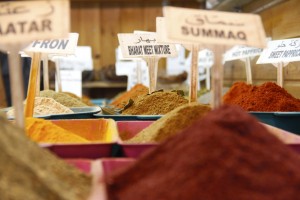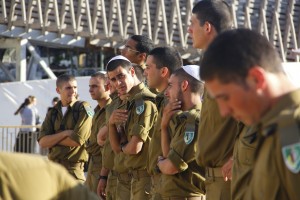Having just returned from the local market to my new home on Mount of Olives in East Jerusalem, I am sitting in the reading room of the Augusta-Victoria Guest House where I enjoy the company of an eclectic, international contingency of volunteers and aid workers. I am here on a four month contract, working with the Lutheran Church of Jordan & the Holy Land to rebuild their website and produce several short, documentary style films about life in Palestine.
I have not been to this place for more than fifteen years. While it feels familiar (the few photos I scanned from 35mm positives stimulating memories) I am of course experiencing it in an entirely new way. Having just finished eating fresh plums and grapes, I am enjoying a cold Taybey beer, a world-famous micro-brew mentioned in the New York Times as “A Niche Beer, made, you might say, to toast peace.” According to biblical scholars, Taybeh is near the place where Jesus submitted himself to forty days fasting. If this delicious local brew had been available then, it would surely have been one of the more challenging temptations.
Today was my first day in the office at the Church of the Redeemer in the center of the Old City Jerusalem, Christian Quarter. Having walked from Mount of Olives through the Damascus Gate, I returned in the early evening by the number 75 bus. My associate, historian, published author and Pastor Fred Strickert was an excellent guide, sharing his depth of knowledge and passion for this ancient place.
The church was constructed in the 1890s, built upon a foundation of stone first established some 2000 years prior. While my office is average in most respects, four walls, desks, book shelves, computers and air conditioning, I need only walk down the hall and look into the subterrainean court yard to be reminded of the historic import of where I now work and live.
Oddly enough, at the heart of the Old City with shops packed in so tight one cannot turn in any direction without bumping into something, or someone, it is far more peaceful than outside the Old City walls where traffic is comprised of buses, tractors, taxis, trucks, and cars, the daily Muslim calls to prayer, and at night, fireworks from a nearby football match (or neighborhood rivalry).
I again moved to embrace the diversity we embody, the very reasons each of us wakes in the morning as different as the color of our skin and eyes, texture of our hair, and style of our clothing.  Some of us fight for what we hold to be true while others want nothing more than a safe place to work, play, and raise children. While the U.S. news tells only of failed peace accords, suicide bombers and shootings, daily life is far more complex, a mixture of the normal and the unsettling.
Some of us fight for what we hold to be true while others want nothing more than a safe place to work, play, and raise children. While the U.S. news tells only of failed peace accords, suicide bombers and shootings, daily life is far more complex, a mixture of the normal and the unsettling.
Muslim shopkeepers sell wares to Russian Jews. Korean pilgrims walk in tight bundles, shoulder to shoulder, chanting as they move through holy places in the Old City streets. A ten year old boy with red-blond hair presses his BMX bike into the back of women’s full length gowns, fingering the battery powered laser blaster mounted on the handlebar, hoping they will vaporize or at least step out of the way in order that he may pass. Vendors sell fresh baked bread, pastries, and falafel balls. Prices vary according to who is paying and what value (or experience) they attribute to the barter.
“You are very welcome here!” is heard over and over again as shop keepers hope to gain the interest and trust of passers by. Street names assigned to corridors no wider than my car and gates, each with an ancient story remind me how many hundred of generations have called this place home. The city itself is a type of tel, layers upon layers of buried history which may never again be viewed by human eyes or given form in anything more than oral histories passed along for countless centuries before ascribed to the pages of books, both ancient and new.
I am finding my comfort zone. For now, I seek those safe places which feel right at different times of the day, the shared kitchen and common reading room, the hillside overlooking Jerusalem in silhouette against the slow setting sun. I fight the urge to call family and friends via Skype just to feel connected again, for if I do this, I know, I will pass too many nights talking instead of being here in order that I may truly experience it. I look back to my three times in Kenya and know this to be true.
I spent last night and this morning writing, for me, again stimulating that part of my brain which enables me to see, events easily described in intimate detail hours, even days later. My eyes blink, the shutter of my original camera, and the moment is frozen in time.
As Ray Bradbury endeavored to write one thousand words each day, I now open that part of me that sees the world through words, photos, and film. I hope that as the days and weeks pass, I will look back and feel I truly lived here, present and accounted for in my mind and body as I built these memories.












